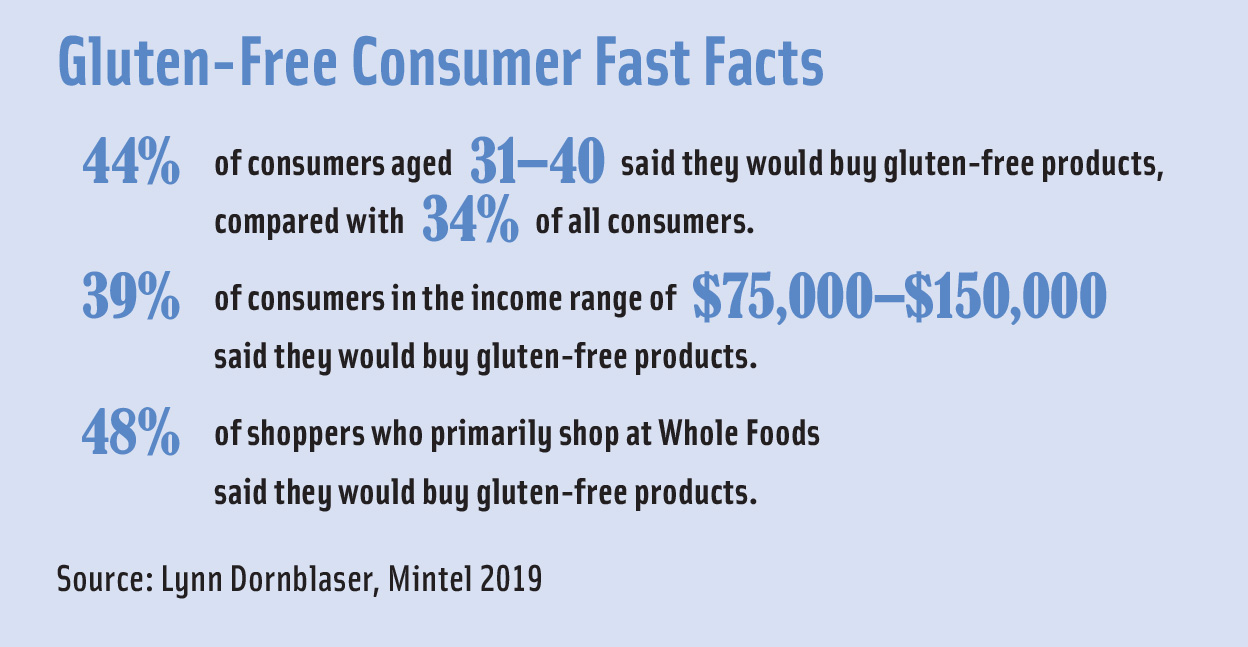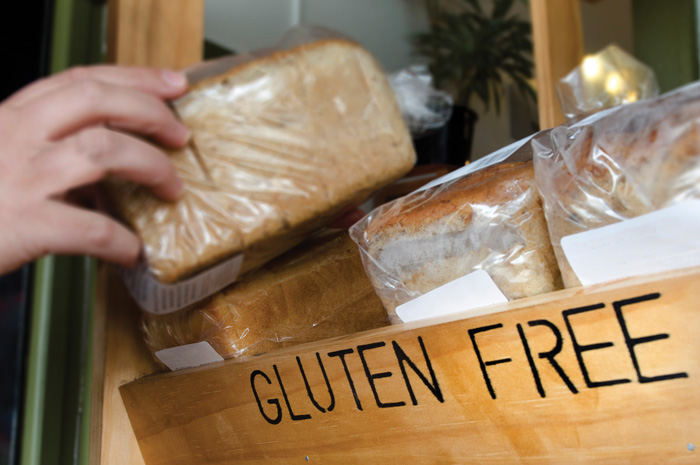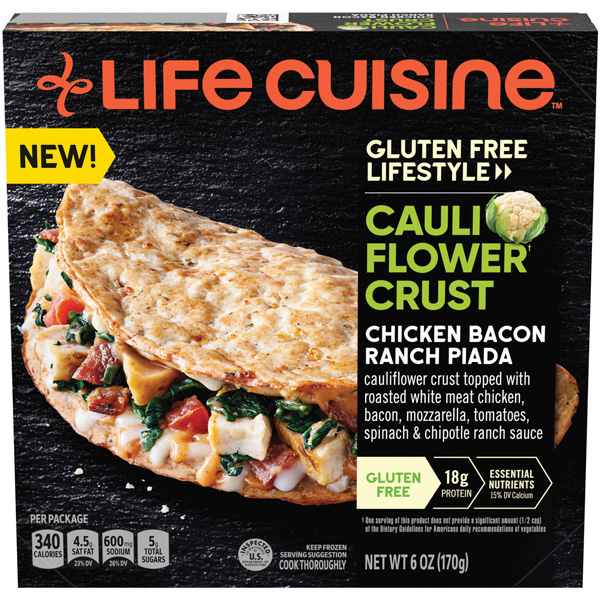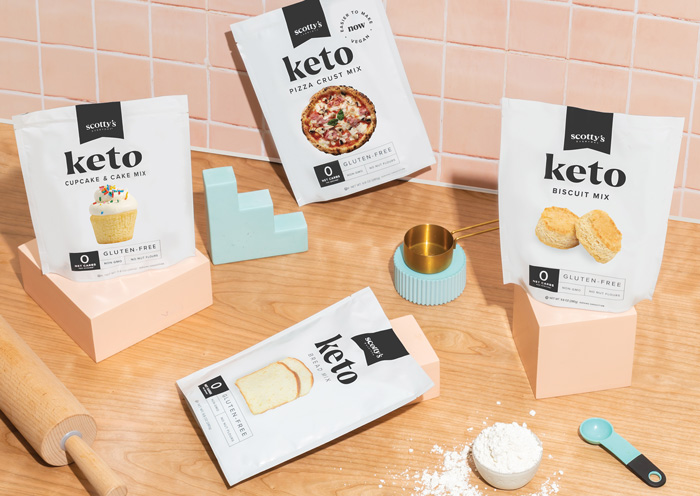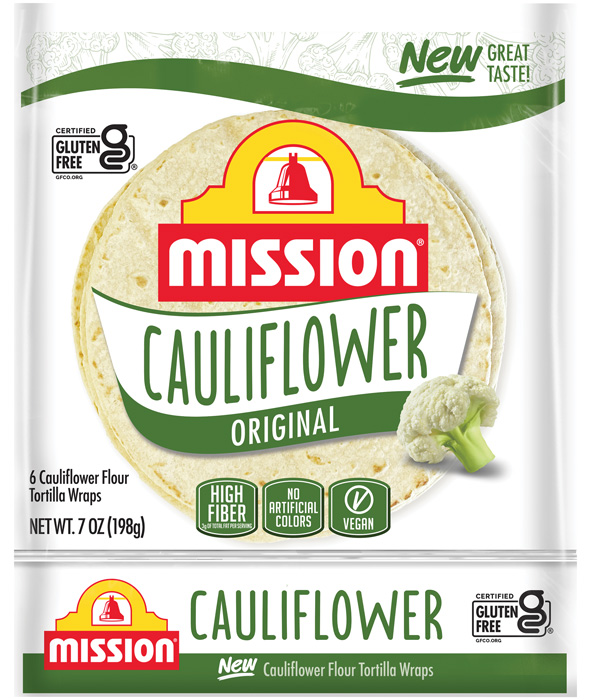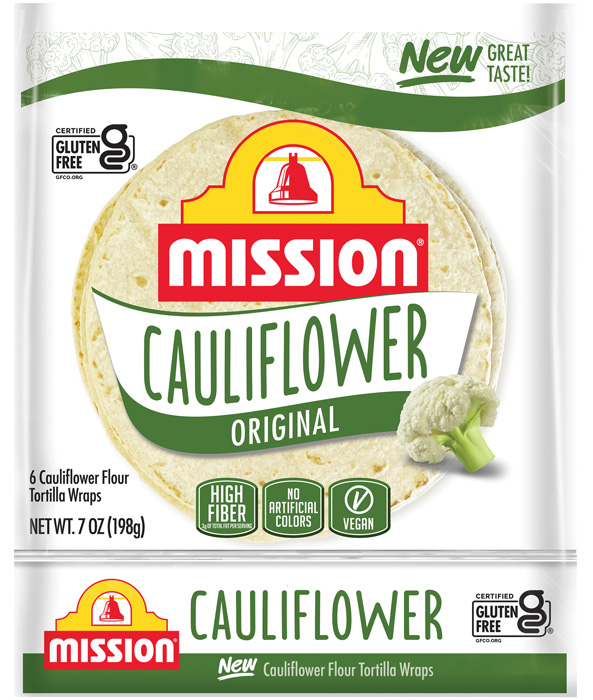Move Over Bland Gluten-Free Brands
INGREDIENTS
Formulations for gluten-free have advanced significantly since the early days of rice flour and tapioca as the standard replacements for wheat flour and other gluten-containing grains. Costs have dropped, which helps shoppers. Consumers, meanwhile, are more sophisticated in their expectations for gluten-free product development. This means that for formulators and marketers of gluten-free products, it’s time to consider that gluten is not consumers’ only concern; they want nutrition, taste, and confidence that the product is safely free of gluten.
“While people with celiac disease and gluten intolerance had few or no options in consumer packaged goods 20–30 years ago—and only limited options 10 years ago—virtually all segments of that market have gluten-free options today,” says Laura Allred, regulatory manager for the Gluten Intolerance Group.
“Availability of gluten-free food is a change that has had a dramatic impact on the consumer experience,” Allred continues. “Barely 10 years ago, consumers often had to shop extensively, sometimes traveling considerable distances, to find the products that were available to them. Today, gluten-free products are widely available at mass merchandisers, supermarket chains, and c-stores, as well as most natural product retailers.”
When giving up gluten, there is a natural expectation to find favorite gluten-free versions that match palate-pleasing wheat-food memories, but such offerings are not always available. Product selection is getting better, however.
“There is always a dream of better specialty options, things like croissants or puff pastry, but the fact is that you can find a gluten-free version of most retail products. So consumer needs are largely being met in terms of food options,” says Allred.
It’s not all sweetness and light. “The two areas where there is still some attention needed are quality—does the product taste good and have a good texture—and, most importantly to us, is there assurance that it is safe?” Allred continues.
Kantha Shelke, principal of Corvus Blue and a consultant to companies seeking new formulations, agrees. “Gluten-free formulations are getting better, but some are just a very starchy version of something that used to have fiber, protein, and substantial texture,” she says.
As knowledgeable formulators—and even some consumers—recognize, simply getting rid of gluten without considering the nutritional implications may be introducing a whole new set of problems. “Consumers are beginning to understand that there are health implications if formulators don’t match up the nutritional qualities of the original ingredients,” Shelke says. The solution lies in technology, innovative ingredients, and active consumer engagement.
Celiac, Non-Gluten Sensitivity, and Just Because
A market survey from Research and Markets estimates that about 30% of adults in the United States eat gluten-free. Though only about 1% of the population (1 in 133 individuals) must avoid gluten because of the autoimmune disease celiac sprue, there are significantly more people who want to eat gluten-free. These consumers can be divided into two primary camps: non-celiac gluten sensitivity (yes, it’s a real thing) and those who simply prefer to avoid gluten.
While not always understood or accepted, non-celiac gluten sensitivity (NCGS) or non-celiac wheat sensitivity (NCWS) may affect from .5% to 13% of people in the United States. Researchers say that NCGS and NCWS are somewhat defined, but there are no single biomarkers for diagnosis, and it may or may not be caused by gluten and other components in wheat.
“It has been suggested that gluten is not the only trigger of symptoms in NCGS. Other components that may cause the sensitivity include amylase-trypsin inhibitors, lignans, agglutinin, and fermentable oligo-, di-, and monosaccharides and polyols (FODMAPs),” say NCGS study researchers (Barbaro 2018).
What is clear about NCGS is that it affects more women than men and is higher among teens and those who are in their 30s and 40s. Symptoms overlap with irritable bowel syndrome and include gastrointestinal discomfort, muscle aches and pains, and rashes, as well as foggy brain— described as an inability to concentrate—fatigue, and headache.
As for those who opt to avoid gluten out of preference but do not have celiac disease or NCGS, the numbers are no less substantial. According to a longitudinal study about the values of non-celiac individuals who avoid gluten, as many as 13% of adults aged 25–36 years valued gluten-free food. They were four to seven times more likely to value food production practices that are local, organic, non-GMO, and minimally processed (Christoph et al. 2018).
Nutritional Concerns
While the trend toward gluten-free purchasing continues to grow, with the category expected to show a compound annual growth rate of 2.0% through 2030, eating gluten-free without a doctor’s supervision may increase the risk of other health concerns (Research and Markets 2021). When wheat-containing foods are compared with gluten-free foods, the latter lack fiber and minerals, including calcium, iron, magnesium, and zinc, in addition to vitamin B12, folate, and vitamin D. Studies show that individuals who follow a gluten-free diet may consequently show higher total cholesterol, impaired fasting glycemia, and higher body mass index.
Consequently, fortification with fiber and other missing nutrients is important for gluten-free formulators to consider. There are growing concerns about using isolated ingredients because intact fibers act very differently in the body than individual ingredients, warns Shelke.
“There are many other agonists in ingredients that impose health benefits,” says Shelke. “For instance, highly refined starches affect triglycerides, and digestion requires more cholesterol while consuming pure carbohydrates such as those in gluten-free foods. The growing incidence of babies born with spina bifida (neural tube defects), which had been eradicated in the United States, is attributed to low-carbohydrate and gluten-free diets that do not benefit from folate added to grain products such as wheat. We are trying to better understand what happens when humans eat an abundance of gluten-free foods.”
Another concern is higher blood levels of heavy metals, including mercury, cadmium, and lead, as well as arsenic levels in urine. According to a National Health and Nutrition Examination Survey study, those following a gluten-free diet tested higher for these heavy metals, likely as a result of eating more rice and fish.
All of these concerns mean that when formulating for gluten-free customers, careful consideration of health ramifications is required. “Some gluten-free foods are being made by enterprises that quickly formulate and do not take the time to find out how the structure will change the physiological implications of the food,” says Shelke.
New Regulations
In August 2020, the U.S. Food and Drug Administration (FDA) passed new laws (finalized in October 2020) for foods that contain fermented or hydrolyzed ingredients and that bear the gluten-free claim. The final rule, “Gluten-Free Labeling of Fermented or Hydrolyzed Foods,” is for foods like yogurt, sauerkraut, pickles, cheese, green olives, and FDA-regulated beers and wines. It also covers hydrolyzed plant proteins that improve flavor or texture in processed foods such as soups, sauces, and seasonings.
The FDA rule states: “Because gluten proteins in hydrolyzed and fermented foods are no longer intact and, currently, cannot be adequately detected and quantified through testing, the final rule states that FDA will determine compliance based on records kept by the manufacturer to show that their foods are gluten-free before fermentation or hydrolysis.” This means the food must meet the definition of gluten-free before undergoing fermentation or hydrolysis, in addition to evaluating any potential cross contamination during the manufacturing process.
“The new FDA ruling on fermented or hydrolyzed products added some clarity—and some confusion,” says Allred. “The important part is that it clarified that any food that is fermented or hydrolyzed as part of its processing must start from gluten-free starting materials. That means that no wheat, rye, or barley should be present in the ingredients prior to the addition of the microorganisms, chemicals, or enzymes used for fermentation or hydrolysis. They instituted this ruling because the current gluten test kits on the market are not accurate at measuring gluten that has been broken down or degraded, so there is no good way to test a product after fermentation or hydrolysis has taken place.”
So what does this mean for the potential gluten content of microorganisms and enzymes used for fermentation or hydrolysis? This is especially important for yeasts and bacteria grown in mediums that contain wheat or barley. If these microorganisms are then used in very small amounts to ferment or hydrolyze a finished product where no other gluten-containing ingredients are introduced, does that mean the finished product is not gluten-free? Allred says that the enzyme industry requested that enzymes be exempt from the new FDA ruling, but this did not fly with the FDA. The agency did say that the amount of an enzyme used in a product would be a consideration in determining whether the finished product could be considered gluten-free.
“We are unsure how the FDA will ultimately regulate in this area, but we have been asking all of our clients to gather information on the components of the growth media used for any of their enzymes, yeast, probiotics, or other cultures, and to look at the amount of these cultures in relation to the total volume of their finished product, so that they can be prepared regardless of the direction taken by the FDA,” Allred says.
Supply Chain Gaps
It’s no secret that COVID-19 has put strains on supply chains, especially for specialty foods like gluten-free. In May 2020, the FDA issued a temporary policy, which allows food manufacturers to make minor formulation changes to their products without updating their product labeling. As of press time, this policy was still in place.
“Of utmost importance is [that] every manufacturer needs to know every ingredient is gluten-free,” says Shelke. “When purchasing from multiple suppliers, the risk for cross contamination is higher.”
Allred says barley is of particular concern. “Since wheat is also an allergen that is required to be declared under the Food and Allergy Labeling and Consumer Protection Act, the unintentional addition of a barley-based component may be the more likely scenario,” she says.
“This is one reason that GFCO (a gluten-free certification program created by the Gluten Intolerance Group), along with all of the other major celiac disease foundations, endorses the passage of the Food Labeling Modernization Act of 2021,” Allred continues. “Among many other things, this act will require all gluten grain sources to be declared on product labels in the same way that the major food allergens must be listed.”
Paleo, Keto, FODMAP Drive Demand
One of the drivers for gluten-free product development is growing demand for vegan, keto, paleo, and FODMAP foods. “The gluten-free industry continues to grow alongside the other major growth sectors in consumer packaged goods, especially vegan and vegetarian foods,” says Allred. “These products were once largely made from wheat gluten, but are now made from a variety of grain, plant, and even fungi-based proteins.
A good-tasting, nutritious, and gluten-free bread is the Holy Grail of this market. As a result of the many ingredient restrictions associated with keto, paleo, and FODMAP, innovation is moving along to produce breads with greater rise or loft, flavor, and a more than acceptable texture. The gap between commercial reality and consumer expectations is narrowing.
Previous strategies for making gluten-free breads focused on replacements. Today, there are two primary strategies for creating wholesome, good-tasting gluten-free breads: 1) choosing scientifically proven ingredients such as emulsifiers, enzymes, fats, fibers, hydrocolloids, and proteins, and 2) adapting technological advances such as high hydrostatic pressure, ohmic heating, and sourdough technologies.
The following list includes advances in ingredients that solve baking challenges associated with gluten-free:
• Arabinoxylans (AXs), which are hemicelluloses found in the cell walls of many cereals, are being tested for use in gluten-free bread. To date, the most success has been with water-extractable AXs to stabilize the dough, which “results in an enhanced gas retention that prevents early coalescence of gas cells and was found to be crucial for achieving higher specific volume and a homogeneous fine bread crumb structure,” according to research (Bender et al. 2020).
• Grouping enzymes together via cross-linking enhances elasticity and consistency in gluten-free batter, bread volume, and crumb softness.
• Sourdough technology is not new, but it is attracting interest in gluten-free baking as it allows for the removal of additives, making the product appeal to clean label consumers, and it improves texture. Choosing the right starter cultures for the fermentation of gluten-free dough is critical. Strains that have been tried with success include Lactobacillus fermentum, L. plantarum, and L. paralimentarius.
• High hydrostatic pressure, traditionally used to thermally preserve fruit juices, is now being used for gluten-free bread making. The application of high pressure increases batter elasticity and improves volume and texture in buckwheat, teff, white rice, and oat doughs.
Standout Gluten-Free Products
Pastas are right behind bread as a must for gluten-free customers. Giovanni Santi, president of Santi Consulting, specializes in the development of new gluten-free pastas. He says that the pandemic opened up a new category for gluten-free pasta—shelf-stable microwavable pasta meals in a cup.
“These cups allow people to have a plant-based quick meal at home with no requirement for refrigeration. The quality is high, and the flavor is good, especially with the addition of cauliflower, sweet potatoes, and zucchini,” he says. Santi says the overlap between keto and gluten-free will likely continue as gluten-free pastas and breads add fiber and proteins.
Here’s a sampling of other products that are carving out space in the gluten-free category:
• Scotty’s Everyday broke the taste barriers for keto-friendly/gluten-free breads and cupcakes with products that feature a light, airy texture and are high in fiber, low in carbohydrates, and free of nuts.
• Carbonaut breads, made from flax, millet, sunflower seeds, and psyllium, satisfy gluten-free and keto consumers with their light and wholesome texture. The company is soon to launch bagels and pizza crusts.
• Cauliflower remains a star ingredient for gluten-free. Nielsen estimates that sales of packaged cauliflower products grew 71% from 2019 to 2020. The Caulipower brand skyrocketed with the introduction of cauliflower pizza crust. The company set the stage for making the white vegetable as popular as green kale. Today, the food company is continuing to launch new products, including gluten-free cauliflower pastas.
• Lastly, peas continue to take center stage for their versatility and nutrition. Among pasta aficionados who do not want to sacrifice taste or nutrition, ZENB, a maker of single-ingredient whole yellow pea pastas, gets high marks for fiber, protein, clean taste, and the ability to sop up pasta sauce.
“With the rise of other diet trends such as paleo, keto, and Whole30 (which all happen to be primarily gluten-free), new flours are gaining mass appeal,” says Allred. “Products made from vegetables, fruits, beans, and nuts are boosting health benefits and finding their way onto store shelves in the form of baking mixes, tortillas, snacks, and more. Cauliflower is a great example—from pizza to pasta, this vegetable has become a standout performer. There is a great deal of creativity coming out of the industry, and it is exciting to watch and see how it will continue to innovate.”
REFERENCES
Barbaro, M. R., C. Cremon, V. Stanghellini, et al. 2021. “Recent advances in understanding non-celiac gluten sensitivity.” F1000Res. (7): F1000. Faculty Rev-1631. doi: 10.12688/f1000research.15849.1.
Bender, D. and R. Schönlechner. 2020. “Innovative approaches towards improved gluten-free bread properties.” J. Cereal Sci. (9) doi.org/10.1016/j.jcs.2019.102904.
Bulka, C. M., M. A. Davis, M. R. Karagas, et al. 2017. “The Unintended Consequences of a Gluten-free Diet.” Epidemiology 28(3): e24–e25. doi: 10.1097/EDE.0000000000000640.
Christoph, M. J., N. Larson, K. C. Hootman, et al. 2018. “Who Values Gluten-Free? Dietary Intake, Behaviors, and Sociodemographic Characteristics of Young Adults Who Value Gluten-Free Food.” J. Acad. Nutr. Diet. 118(8):1389–1398. doi: 10.1016/j.jand.2018.04.007.
Raehsler, S. L., R. S. Choung, E. V. Marietta, et al. 2018. “Accumulation of Heavy Metals in People on a Gluten-Free Diet.” Clin. Gastroenterol. Hepatol. 16(2): 244–251. doi: 10.1016/j.cgh.2017.01.034.
Research and Markets. 2021. “Global Celiac Disease Market Insight, Epidemiology and Market Forecast—2030.” Press release, June 29.
Vici, G., L. Belli, and M. Biondi. 2016. “Gluten free diet and nutrient deficiencies: A review.” Clin. Nutr. 35(6):1236–1241. doi: 10.1016/j.clnu.2016.05.002.
Zanini, B., R. Baschè, A. Ferraresi, et al. 2015. “Randomised clinical study: gluten challenge induces symptom recurrence in only a minority of patients who meet clinical criteria for non-coeliac gluten sensitivity.” Pharmacol. Ther. 42(8): 968–76.



